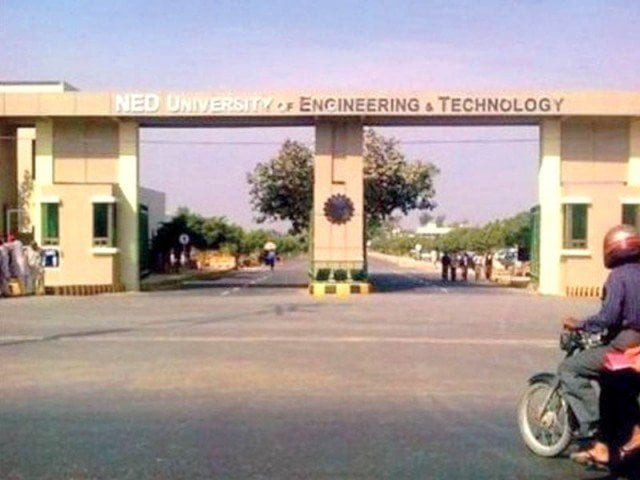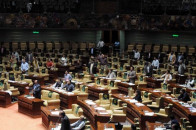A historic feat: NED to award doctorates to 13 candidates today
New research to detect traffic violations, advertisement statistics developed at varsity

NED University in Karachi. PHOTO: FILE
In a meeting presided over by Prof Dr Sarwish Lodhi, the vice chancellor, the varsity's syndicate approved the conferral of the degrees last Friday. The PhD degrees, along with BA degrees and around 2,900 BS degrees, will be awarded at the university's convocation at its campus today.
Federal education minister Shafqat Mehmood, Pakistan Engineering Council chairman Javed Saleem Qureshi, Sindh chief minister Murad Ali Shah and Sindh governor Imran Ismail will attend the convocation ceremony.
Advancements in research
Muhammad Umar Farooq, under the supervision of Dr Najeed Ahmed Khan from the Computer Science and Information Technology department at NED University, has conducted a study on traffic anomalies in Pakistan and devised a framework to monitor traffic, report illegal driving and reduce the ratio of traffic incidents in the country.
Unable to compete: NED entry test lays bare Sindh’s education emergency
According to Dr Khan, the research on traffic anomalies was carried out with the aim of preparing an "intelligent transport system" based on the models of developed countries. The system allows the monitoring of speeding, driving in the wrong direction, sharp turns, wrong pedestrian crossing and wearing of seatbelts.
"Traffic anomaly detection is a challenge in our country," said Dr Khan, explaining that Farooq obtained several traffic videos and used them to study moving objects such as vehicles. He used calculations from these videos to create an algorithm that computes the process and can generate an alarm if it detects an anomaly.
Dr Khan said that once the study was concluded, the system could be linked to the cameras and control rooms already installed by the government to allow them to not only identify the vehicles committing traffic violations, but also to send challans to the homes of violators.
Another researcher in the same department, Waseemul Haqqi, has created a system to separate advertisements from programmes on local television channels, and has come up with a program to collect statistics about advertisements for the Pakistan Electronic Media Regulatory Authority and advertising agencies as well.
Explaining this study, Dr Khan said that the presence of channel logos during the airing of both programmes and commercials made it very difficult to obtain advertisement statistics in Pakistan. However, Haqqi created a system for separating them and gathering statistics, which will help calculate how long and how often a specific advertisement is broadcast during prime time. He added that a study was also conducted to calculate how much time channels allot for advertisements as opposed to programme transmissions on a daily basis.
According to Dr Khan, it took Haqqi over three years to carry out his research. Haqqi's algorithm first separates commercials, dramas or other programmes and then identifies the products being advertised before computing the advertisement statistics.
This research could be very useful for the Pakistan Electronic Media Regulatory Authority, advertising agencies and manufacturers, said Dr Khan.
He also shared that it took more than three years for this research and it became possible due to algorithm to obtain the statistic of ads in a transmission. He shared that first commercial, drama or any program is separated via algorithm in the first phase. In the second phase, it is identified that of which product the ad belongs to while in the third phase, the statistics of the ads is computed.
Published in The Express Tribune, December 7th, 2019.



















COMMENTS
Comments are moderated and generally will be posted if they are on-topic and not abusive.
For more information, please see our Comments FAQ